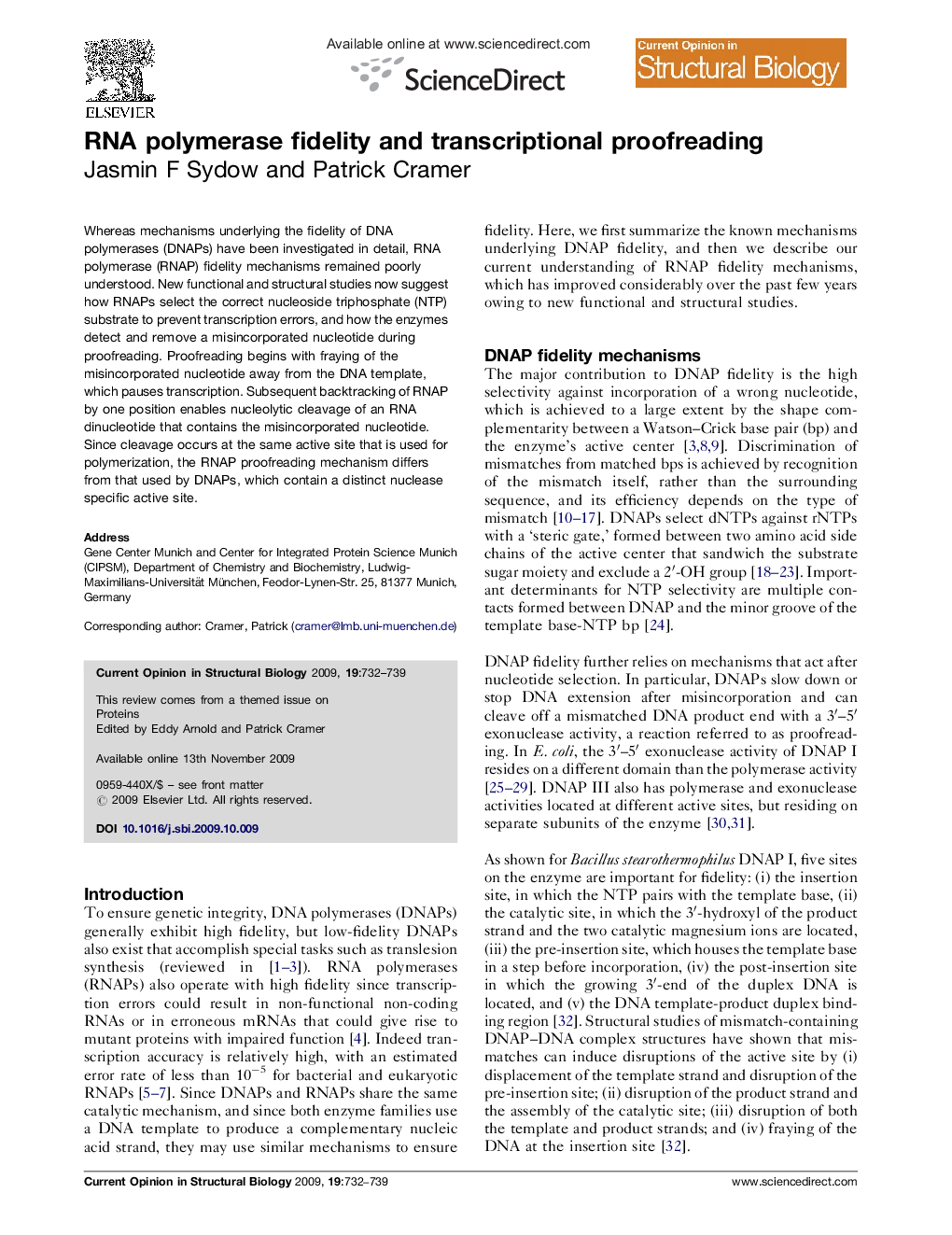| Article ID | Journal | Published Year | Pages | File Type |
|---|---|---|---|---|
| 10822625 | Current Opinion in Structural Biology | 2009 | 8 Pages |
Abstract
Whereas mechanisms underlying the fidelity of DNA polymerases (DNAPs) have been investigated in detail, RNA polymerase (RNAP) fidelity mechanisms remained poorly understood. New functional and structural studies now suggest how RNAPs select the correct nucleoside triphosphate (NTP) substrate to prevent transcription errors, and how the enzymes detect and remove a misincorporated nucleotide during proofreading. Proofreading begins with fraying of the misincorporated nucleotide away from the DNA template, which pauses transcription. Subsequent backtracking of RNAP by one position enables nucleolytic cleavage of an RNA dinucleotide that contains the misincorporated nucleotide. Since cleavage occurs at the same active site that is used for polymerization, the RNAP proofreading mechanism differs from that used by DNAPs, which contain a distinct nuclease specific active site.
Related Topics
Life Sciences
Biochemistry, Genetics and Molecular Biology
Biochemistry
Authors
Jasmin F Sydow, Patrick Cramer,
